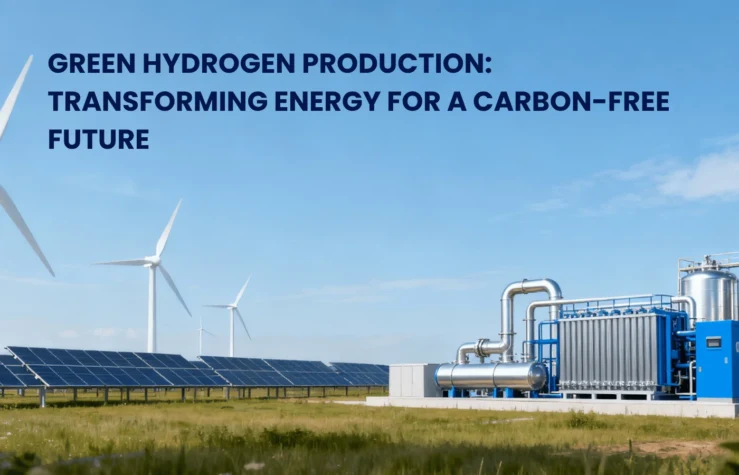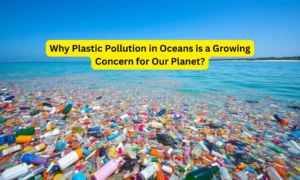The Dawn of a Clean Energy Revolution
Imagine a world where air pollution is history, industries run clean, and the very fuel that powers our lives leaves nothing behind but water vapor. Sounds like science fiction? It’s the promise of green hydrogen production—a groundbreaking energy solution captivating both innovators and governments.
The race is on: as climate change intensifies, demand for truly clean fuel has soared. Green hydrogen production has emerged as a beacon of hope, driven by dramatic advances in renewable energy and ambitious net-zero pledges. The implications for industry, mobility, and everyday life are profound—this isn’t just another green trend, but a technology rewriting the global energy playbook.
Understanding Green Hydrogen Production
What Sets Green Hydrogen Apart?
At its core, green hydrogen refers to hydrogen gas produced using renewable resources—typically by splitting water molecules (H₂O) into hydrogen and oxygen via electrolysis powered by solar, wind, or hydropower. Unlike “grey hydrogen,” which is extracted from fossil fuels, green hydrogen production emits zero carbon dioxide, offering a truly sustainable alternative for energy-hungry sectors.
How Is Green Hydrogen Produced?
The most common commercial method today is electrolysis, where an electrolyzer uses renewable electricity to split water. Researchers are pushing boundaries with proton exchange membrane (PEM) electrolysis, alkaline electrolysis, and even innovative photoelectrochemical techniques that harness sunlight for direct water splitting. Cutting-edge experiments explore microorganisms producing hydrogen through biophotolysis or fermentation, further widening the landscape.
Why Green Hydrogen Matters Now
The Climate Imperative
The world faces a critical window to prevent catastrophic warming, and carbon-heavy sectors—like steel, chemicals, aviation, and shipping—are under increasing scrutiny. Green hydrogen production offers a proven pathway for decarbonizing these emissions-intensive industries without rewiring their fundamental processes.
Market Momentum and Recent Trends
As global leaders lock in ambitious climate targets, investment in green hydrogen production is surging. The market is expected to skyrocket, driven by regulatory incentives, falling renewable energy costs, and advances in electrolyzer technology. Hybrid renewable systems, combining wind and solar, are now commonplace, ensuring round-the-clock hydrogen generation. Even traditional gas grids in some regions have begun blending in green hydrogen, reducing emissions on a wide scale.
How Does Green Hydrogen Production Work?
Step 1: Sourcing Renewable Energy
Solar farms, wind parks, or hydropower stations generate clean electricity. This renewable energy feeds into powerful electrolyzers.
Step 2: Electrolysis in Action
Electrolyzers split water into hydrogen (H₂) and oxygen (O₂). Only the hydrogen is captured for use; the only emission? Pure oxygen—a rare environmental win-win.
Step 3: Purification, Storage, and Distribution
Once created, hydrogen is purified, cooled, and stored. New advances in high-pressure composite cylinders and underground storage are solving historic transportation challenges, making it feasible to deliver green hydrogen where needed.
Expert Viewpoints
Leading experts stress that scaling up production, lowering costs, and improving electrolyzer efficiency are the keys to mainstream adoption. According to a recent review, countries investing heavily in R&D and infrastructure—such as Germany, Japan, and India—are rapidly building competitive advantages that will shape the global energy landscape for decades.
Major Technologies Powering Green Hydrogen Production
- Alkaline Electrolysis: The oldest and most mature technology, favored for its lower cost and simplicity.
- Proton Exchange Membrane (PEM) Electrolysis: Provides higher efficiency, rapid response times, and is suitable for integration with variable renewable sources like wind and solar.
- Solid Oxide Electrolysis (SOEC): Still in a nascent stage, SOEC offers high efficiency by operating at elevated temperatures, potentially slashing overall energy usage.
- Emerging: Photoelectrochemical and Biological Routes: Photoelectrochemical water splitting and biohydrogen (using microbes) are promising next-gen techniques still in the research pipeline, with the potential to further clean up production and reduce costs.
Real-World Examples of Green Hydrogen in Action
- Europe’s Green Hydrogen Valleys: The EU’s Green Hydrogen Strategy has rolled out massive pilot projects—think entire ports, industrial parks, and even airports running on green hydrogen.
- Indian Railways: India is piloting hydrogen-powered trains and buses, leveraging its abundant sunlight and ambitious climate goals.
- Steelmaking in Sweden: The world’s first “fossil-free” steel was produced using hydrogen, showing heavy industry’s readiness for transformation.
Overcoming Challenges: Cost, Scale, and Storage
Despite hype and hope, green hydrogen production still faces daunting hurdles:
- High Initial Costs: Electrolyzer pricing and renewable electricity costs remain higher than those for fossil-based hydrogen, though both are falling rapidly.
- Storage and Transport: Hydrogen’s tiny molecules can leak and embrittle tanks and pipes. Cutting-edge materials and high-pressure storage cylinders are changing the game, but robust infrastructure buildout is critical.
- Policy and Regulation: Harmonizing standards, safety, and incentives across regions requires global collaboration and strong national leadership.
The Green Hydrogen Production Ecosystem: From Research Labs to Real-World Impact
The Top Hotspots for Research & Deployment
- Europe: Ambitious targets in Germany, Netherlands, and Denmark, with billions invested in pilots for industry, mobility, and the grid.
- India: Poised to lead the developing world with major research in advanced electrolysis and integration with massive solar projects.
- US and Japan: Industry alliances are fast-tracking hydrogen corridors and “green gigafactories.”
Collaboration and Innovation
The transition isn’t about one country or company—new public-private partnerships are critical, connecting research labs, manufacturers, and end-users to build scale and drive innovation.
Actionable Insights: What’s Next for Businesses and Policymakers?
- Prioritize Infrastructure: Secure investment in grid upgrades, storage, and hydrogen fueling infrastructure.
- Emphasize R&D: Fund research into electrolyzer efficiency, materials, and integration with renewables.
- Support Policy Frameworks: Implement robust markets with carbon pricing, certification, and incentives to level the playing field.
- Foster Collaboration: Forge alliances between government, industry, and academia to solve technical and regulatory bottlenecks.
How Can Green Hydrogen Power Your World?
For the everyday consumer, green hydrogen might seem distant, but change is closer than you think. Imagine cars that emit only water, industries that don’t pollute, and homes heated with clean power—even on cloudy days. That future is now being built in labs, factories, and policy rooms across the globe.
Compelling Shareable Insights
- The cost of electrolyzers has dropped 60% in the past five years—a revolution in clean energy economics.
- The first fossil-free steel plant now operates in Sweden, powered entirely by green hydrogen.
- India’s hydrogen-powered trains could reduce urban air pollution by 50% in pilot cities.
Final Thoughts: The Road Ahead
Green hydrogen production is more than a buzzword: it’s the engine for a cleaner, more resilient world—one innovation, research project, and policy breakthrough at a time. As advances continue, its promise grows not just for industry, but for every citizen seeking a healthier planet.




